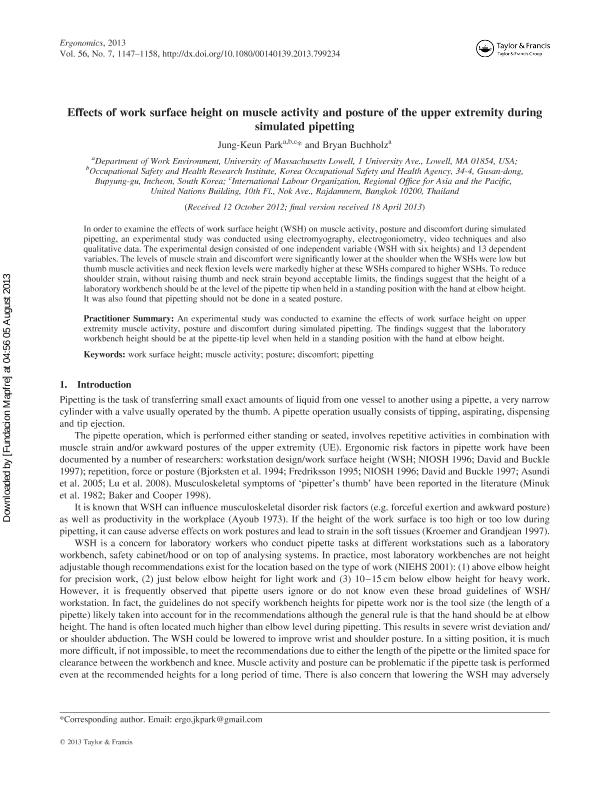Effects of work surface height on muscle activity and posture of the upper extremity during simulated pipetting

Contenido multimedia no disponible por derechos de autor o por acceso restringido. Contacte con la institución para más información.
| Tag | 1 | 2 | Value |
|---|---|---|---|
| LDR | 00000cab a2200000 4500 | ||
| 001 | MAP20130025391 | ||
| 003 | MAP | ||
| 005 | 20130829132110.0 | ||
| 008 | 130805e20130701esp|||p |0|||b|spa d | ||
| 040 | $aMAP$bspa$dMAP | ||
| 084 | $a875 | ||
| 100 | 1 | $0MAPA20130010816$aPark, Jung-Keun | |
| 245 | 1 | 0 | $aEffects of work surface height on muscle activity and posture of the upper extremity during simulated pipetting$cJung-Keun Park, Bryan Buchholz |
| 520 | $aIn order to examine the effects of work surface height (WSH) on muscle activity, posture and discomfort during simulated pipetting, an experimental study was conducted using electromyography, electrogoniometry, video techniques and also qualitative data. The experimental design consisted of one independent variable (WSH with six heights) and 13 dependent variables. The levels of muscle strain and discomfort were significantly lower at the shoulder when the WSHs were low but thumb muscle activities and neck flexion levels were markedly higher at these WSHs compared to higher WSHs. To reduce shoulder strain, without raising thumb and neck strain beyond acceptable limits, the findings suggest that the height of a laboratory workbench should be at the level of the pipette tip when held in a standing position with the hand at elbow height. It was also found that pipetting should not be done in a seated posture. | ||
| 773 | 0 | $wMAP20100019818$tErgonomics : the international journal of research and practice in human factors and ergonomics$dOxon [United Kingdom] : Taylor & Francis, 2010-$x0014-0139$g01/07/2013 Volumen 56 Número 7 - julio 2013 |

